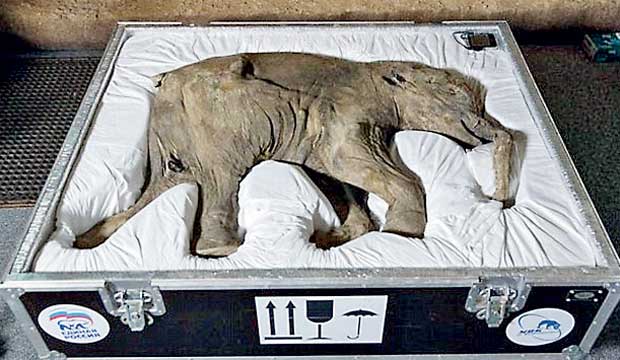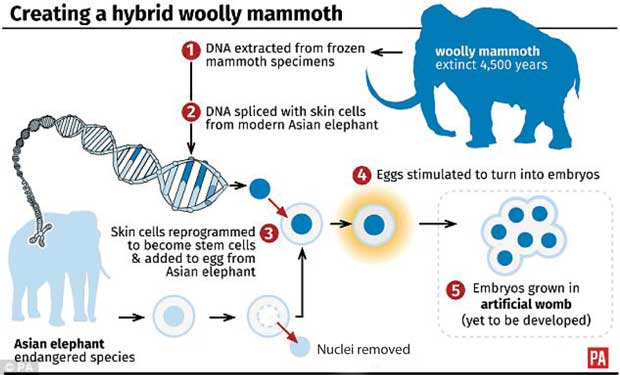17 Feb 2017 - {{hitsCtrl.values.hits}}

Woolly mammoths became extinct thousands of years ago, but now scientists claim they are just two years away from bringing woolly mammoths back from the dead.
The shaggy beasts last wandered the tundra of Siberia before our human ancestors probably hunted them into extinction.
Now a project to bring back the mammoth said within two years the nearest possible thing to a mammoth could be created.
It would be a hybrid between an Asian elephant and a mammoth – perhaps you could call it a ‘mamephant’.t would be created from the DNA extracted from frozen mammoth carcasses retrieved from permafrost.
If the Harvard University scientists succeed it will mark a turning point in plans to revive mammoths – by programming their genes into an Asian elephant.
The bundle of cells would have genes for mammoth features such as shaggy long hair, thick layers of fat, and blood that is perfectly suited to flowing in sub zero conditions.

But years of work lie ahead before any serious attempt can be made to produce a living creature.
The scientists have ambitious plans to grow it within an artificial womb rather than recruit a female elephant as a surrogate mother.
Since starting the project in 2015 the researchers have increased the number of ‘edits’ where mammoth DNA has been spliced into the elephant genome from 15 to 45.Professor George Church, who heads the Harvard team, said: ‘We’re working on ways to evaluate the impact of all these edits and are basically trying to establish embryogenesis in the lab.
‘The list of edits affects things that contribute to the success of elephants in cold environments.
‘We already know about ones to do with small ears, sub-cutaneous fat, hair and blood, but there are others that seem to be positively selected.’He added: ‘Our aim is to produce a hybrid elephant/mammoth embryo. Actually, it would be more like an elephant with a number of mammoth traits.
‘We’re not there yet, but it could happen in a couple of years.’
The woolly mammoth roamed across Europe, Asia, Africa and North America during the last Ice Age and vanished some 4,500 years ago, probably due to a combination of climate change and hunting by humans. Their closest living relative is the Asian, rather than the African, elephant.
‘De-extincting’ the mammoth has become a realistic prospect because of revolutionary gene editing techniques that allow the precise selection and insertion of DNA from specimens frozen over millennia in Siberian ice.
17 Nov 2024 4 minute ago
17 Nov 2024 1 hours ago
17 Nov 2024 1 hours ago
17 Nov 2024 3 hours ago
17 Nov 2024 5 hours ago